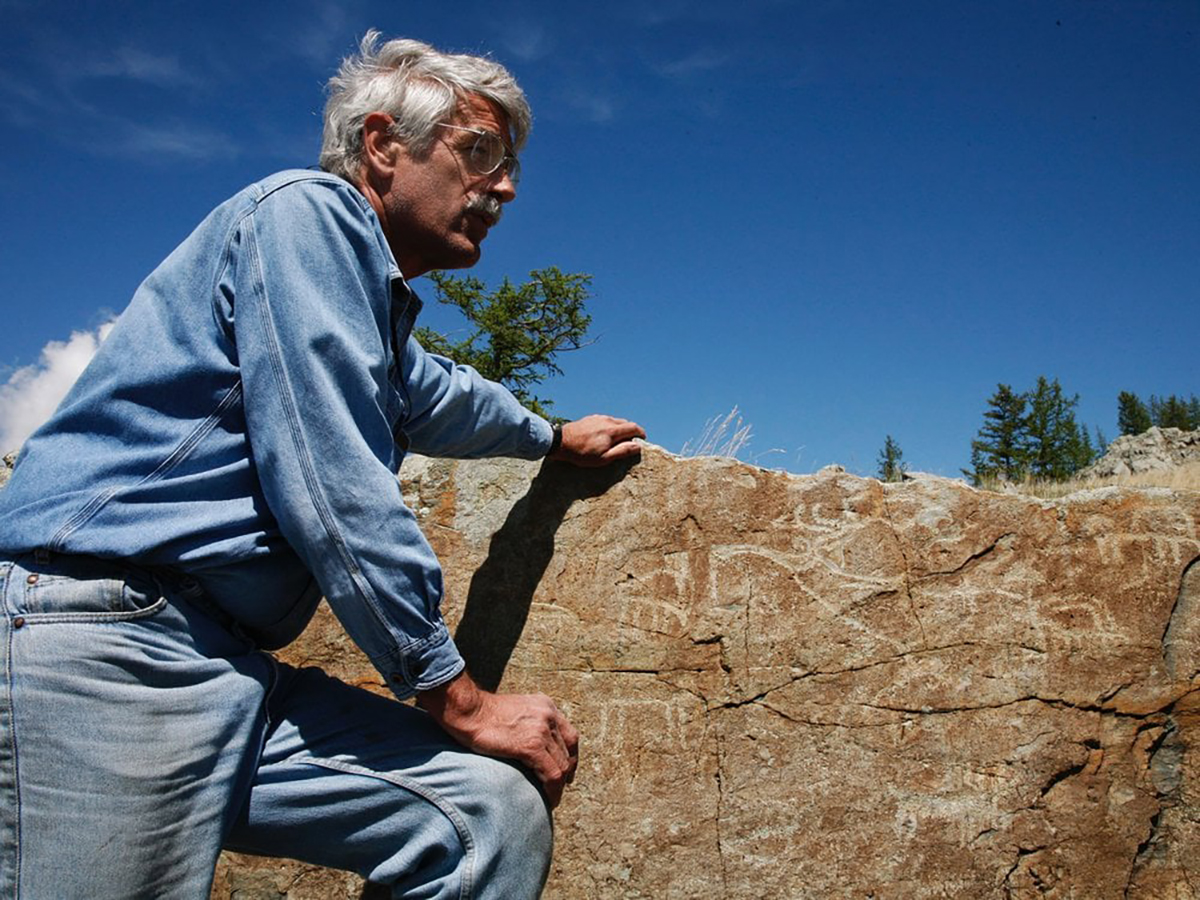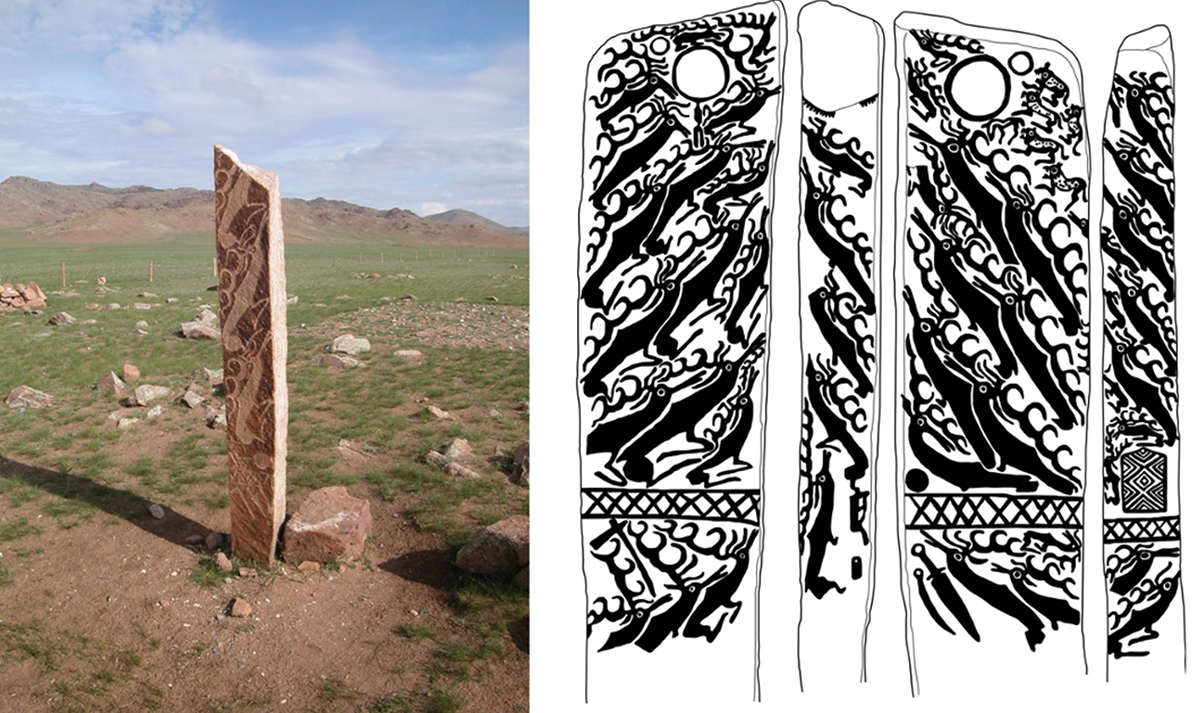


An article by Emma Saaty on smithsonianmag.com - Meet the Smithsonian Scientist Studying the Mysterious Mongolian Deer Stones - reports on archaeologist William Fitzhugh who has spent the past two decades documenting carved stone monoliths in the Mongolian countryside to uncover the secrets of an elusive ancient culture.

Miles into the remote Mongolian steppe, there is nothing but grass as far as the eye can see. Off in the distance, a series of stone pillars rise above the bare landscape. Morning sunlight illuminates the faces of ancestors carved in the stone thousands of years ago, ancient leaders left to watch over their land until the end of time.

The Mongolian deer stones, named for the striking deer carvings that cover their narrow frames, were first described by Russian researchers in the late 1800s. Created by an ancient people during Mongolia’s Bronze Age between 1400-700 BC, most early archaeologists did not know what to make of the mysterious monuments. That is, until William Fitzhugh, the director of the Arctic Studies Center at the National Museum of Natural History, and his Mongolian partner, Jamsranjav Bayarsaikhan, began applying new archaeological methods to an old problem.
For the past two decades, Fitzhugh and Bayarsaikhan have been diligently searching the Mongolian countryside for clues to help them understand this ancient culture and connect it to the traditions of living populations today. Their research on the stones has helped create a visual biography of the people who created them so long ago.
This year, Fitzhugh and Bayarsaikhan are releasing the results of their decades of work. Their books, 'Deer Stones of Northern Mongolia' and 'Archaeology of Bronze Age Mongolia: A Deer Stone Diary', as well as a feature in Current World Archaeology magazine chronicle their experiences among the deer stones.
To read more about Fitzhugh’s rich research career and the captivating stories from his time spent on the Mongolian steppe, visit the Smithsonian Magazine online below:
by Bradshaw Foundation
Monday 03 February 2025
by Bradshaw Foundation
Friday 09 August 2024
by Bradshaw Foundation
Wednesday 24 July 2024
by Bradshaw Foundation
Thursday 04 July 2024
by Bradshaw Foundation
Monday 01 July 2024
by Bradshaw Foundation
Wednesday 20 March 2024
by Bradshaw Foundation
Tuesday 13 February 2024
by Bradshaw Foundation
Tuesday 13 February 2024
by Bradshaw Foundation
Thursday 01 February 2024
by Bradshaw Foundation
Tuesday 28 November 2023
by Bradshaw Foundation
Thursday 23 November 2023
by Bradshaw Foundation
Monday 20 November 2023
by Bradshaw Foundation
Tuesday 31 October 2023
by Bradshaw Foundation
Thursday 26 October 2023
by Bradshaw Foundation
Wednesday 20 September 2023
by Bradshaw Foundation
Monday 17 July 2023
by Bradshaw Foundation
Monday 03 February 2025
by Bradshaw Foundation
Friday 09 August 2024
by Bradshaw Foundation
Wednesday 24 July 2024
by Bradshaw Foundation
Thursday 04 July 2024
by Bradshaw Foundation
Monday 01 July 2024
by Bradshaw Foundation
Wednesday 20 March 2024
by Bradshaw Foundation
Tuesday 13 February 2024
by Bradshaw Foundation
Tuesday 13 February 2024
by Bradshaw Foundation
Thursday 01 February 2024
by Bradshaw Foundation
Tuesday 28 November 2023
by Bradshaw Foundation
Thursday 23 November 2023
by Bradshaw Foundation
Monday 20 November 2023
by Bradshaw Foundation
Tuesday 31 October 2023
by Bradshaw Foundation
Thursday 26 October 2023
by Bradshaw Foundation
Wednesday 20 September 2023
by Bradshaw Foundation
Monday 17 July 2023
Friend of the Foundation











